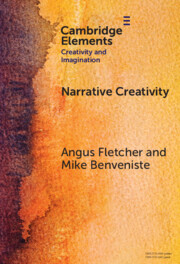622 results
Chapter 14 - Modeling Long-term Trends and Discontinuities in Art
- from Part III - Understanding Art Through Dynamic Models
-
- Book:
- A Complex Systems View on the Visual Arts
- Published online:
- 20 March 2025
- Print publication:
- 03 April 2025, pp 362-381
-
- Chapter
- Export citation

Learning Health Systems
-
- Published online:
- 03 March 2025
- Print publication:
- 03 April 2025
-
- Element
-
- You have access
- Open access
- HTML
- Export citation
17 - The Unitary Patent System and Utility Models
- from Part II - Utility Models in Action
-
-
- Book:
- Sub-patent Innovation Rights
- Published online:
- 06 February 2025
- Print publication:
- 13 February 2025, pp 281-307
-
- Chapter
-
- You have access
- Open access
- HTML
- Export citation
11 - China’s Utility Model Patent Legal System
- from Part I - Utility Model Laws and Practices around the World
-
-
- Book:
- Sub-patent Innovation Rights
- Published online:
- 06 February 2025
- Print publication:
- 13 February 2025, pp 200-216
-
- Chapter
-
- You have access
- Open access
- HTML
- Export citation
6 - Utility Models in Germany and Switzerland
- from Part I - Utility Model Laws and Practices around the World
-
-
- Book:
- Sub-patent Innovation Rights
- Published online:
- 06 February 2025
- Print publication:
- 13 February 2025, pp 109-116
-
- Chapter
-
- You have access
- Open access
- HTML
- Export citation
1 - Utility Models and Other Forms of Sub-patent Protection
-
-
- Book:
- Sub-patent Innovation Rights
- Published online:
- 06 February 2025
- Print publication:
- 13 February 2025, pp 1-18
-
- Chapter
-
- You have access
- Open access
- HTML
- Export citation
An Introduction to the Law, Ethics, and Policy of Artificial Intelligence
-
-
- Book:
- The Cambridge Handbook of the Law, Ethics and Policy of Artificial Intelligence
- Published online:
- 06 February 2025
- Print publication:
- 13 February 2025, pp 1-14
-
- Chapter
-
- You have access
- Open access
- HTML
- Export citation
Conversation 6 - Innovation in Financial Services and Supervision
-
- Book:
- Legal Innovation
- Published online:
- 06 February 2025
- Print publication:
- 13 February 2025, pp 146-170
-
- Chapter
-
- You have access
- Open access
- HTML
- Export citation
16 - The Debate over Second-Tier Patent Protection in the United States
- from Part I - Utility Model Laws and Practices around the World
-
-
- Book:
- Sub-patent Innovation Rights
- Published online:
- 06 February 2025
- Print publication:
- 13 February 2025, pp 262-278
-
- Chapter
-
- You have access
- Open access
- HTML
- Export citation
2 - Overview of Worldwide Utility Model Filings, Litigation and Activity
-
-
- Book:
- Sub-patent Innovation Rights
- Published online:
- 06 February 2025
- Print publication:
- 13 February 2025, pp 19-28
-
- Chapter
-
- You have access
- Open access
- HTML
- Export citation
8 - Utility Model Protection in Poland
- from Part I - Utility Model Laws and Practices around the World
-
-
- Book:
- Sub-patent Innovation Rights
- Published online:
- 06 February 2025
- Print publication:
- 13 February 2025, pp 129-143
-
- Chapter
-
- You have access
- Open access
- HTML
- Export citation

U.S. Innovation Inequality and Trumpism
- The Political Economy of Technology Deserts in a Knowledge Economy
-
- Published online:
- 07 February 2025
- Print publication:
- 13 February 2025
-
- Element
- Export citation

Entrepreneurship and Evolutionary Economics
-
- Published online:
- 04 February 2025
- Print publication:
- 27 February 2025
-
- Element
- Export citation
Novel educational strategies to improve the telemedicine clinical skills of medical students
-
- Journal:
- Primary Health Care Research & Development / Volume 26 / 2025
- Published online by Cambridge University Press:
- 03 February 2025, e10
-
- Article
-
- You have access
- Open access
- HTML
- Export citation
Addressing Competitiveness Concerns of EU exporters with Industrial Policy: The Role of Innovation Support
-
- Journal:
- World Trade Review , First View
- Published online by Cambridge University Press:
- 30 January 2025, pp. 1-20
-
- Article
- Export citation
9 - Experience the Benefits of Work
-
- Book:
- Brain Boost
- Published online:
- 23 January 2025
- Print publication:
- 23 January 2025, pp 107-115
-
- Chapter
- Export citation

Narrative Creativity
- An Introduction to How and Why
-
- Published online:
- 21 January 2025
- Print publication:
- 30 January 2025
-
- Element
-
- You have access
- Open access
- HTML
- Export citation
5 - The Benefits of State Government
-
- Book:
- Reimagining the American Union
- Published online:
- 02 January 2025
- Print publication:
- 09 January 2025, pp 211-242
-
- Chapter
- Export citation
The relationship between innovation and organizational performance: A meta-analysis
-
- Journal:
- Journal of Management & Organization / Volume 30 / Issue 6 / November 2024
- Published online by Cambridge University Press:
- 23 December 2024, pp. 2474-2494
-
- Article
-
- You have access
- HTML
- Export citation
13 - Teaching the Legal Inventors of the Future
- from III - How Legal Design Works
-
-
- Book:
- Legal Design
- Published online:
- 19 December 2024
- Print publication:
- 19 December 2024, pp 208-227
-
- Chapter
- Export citation


